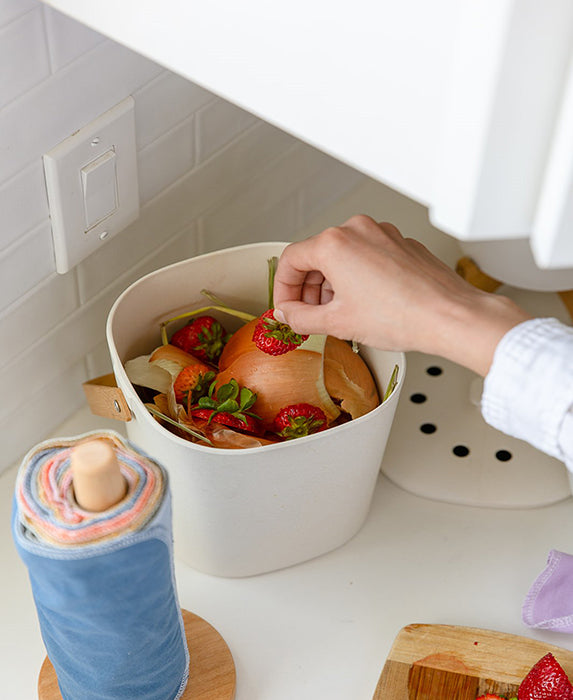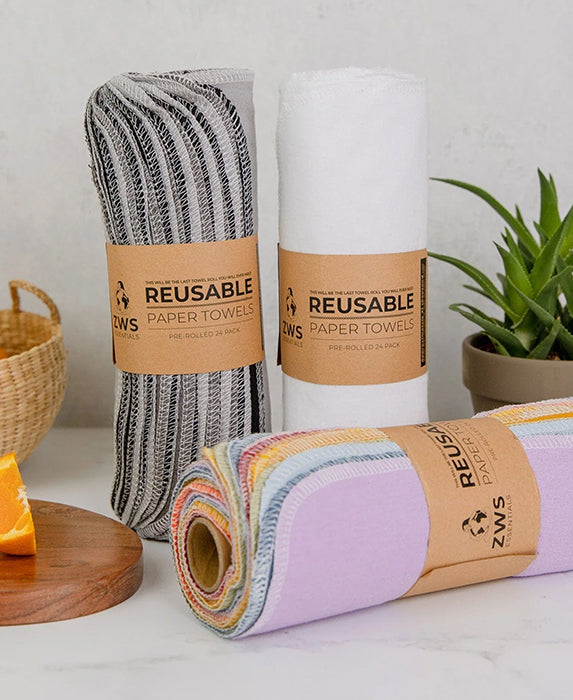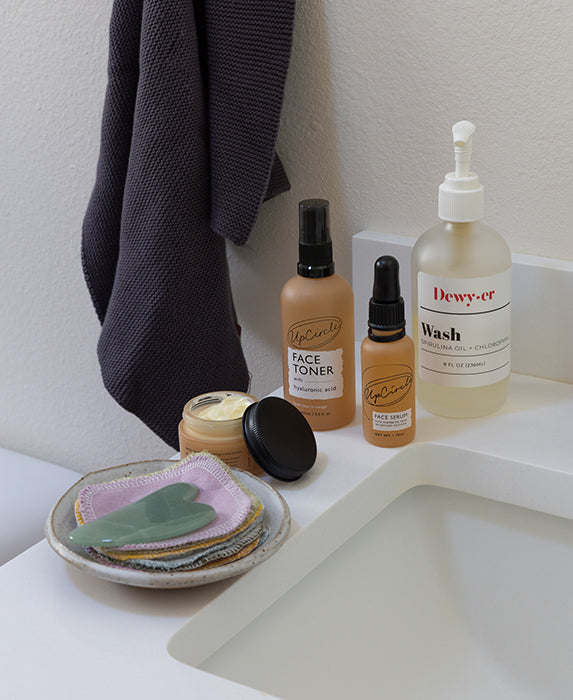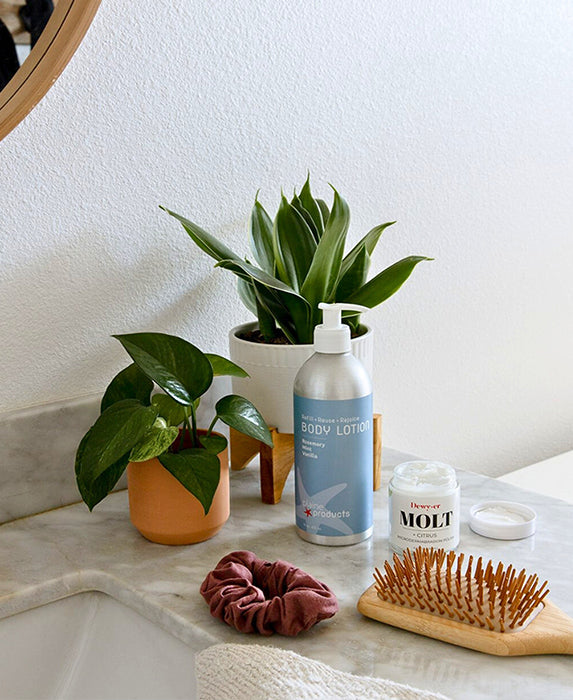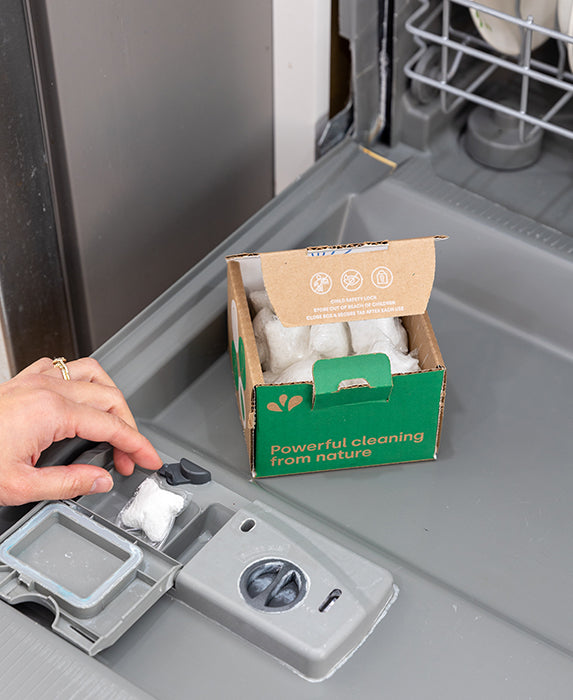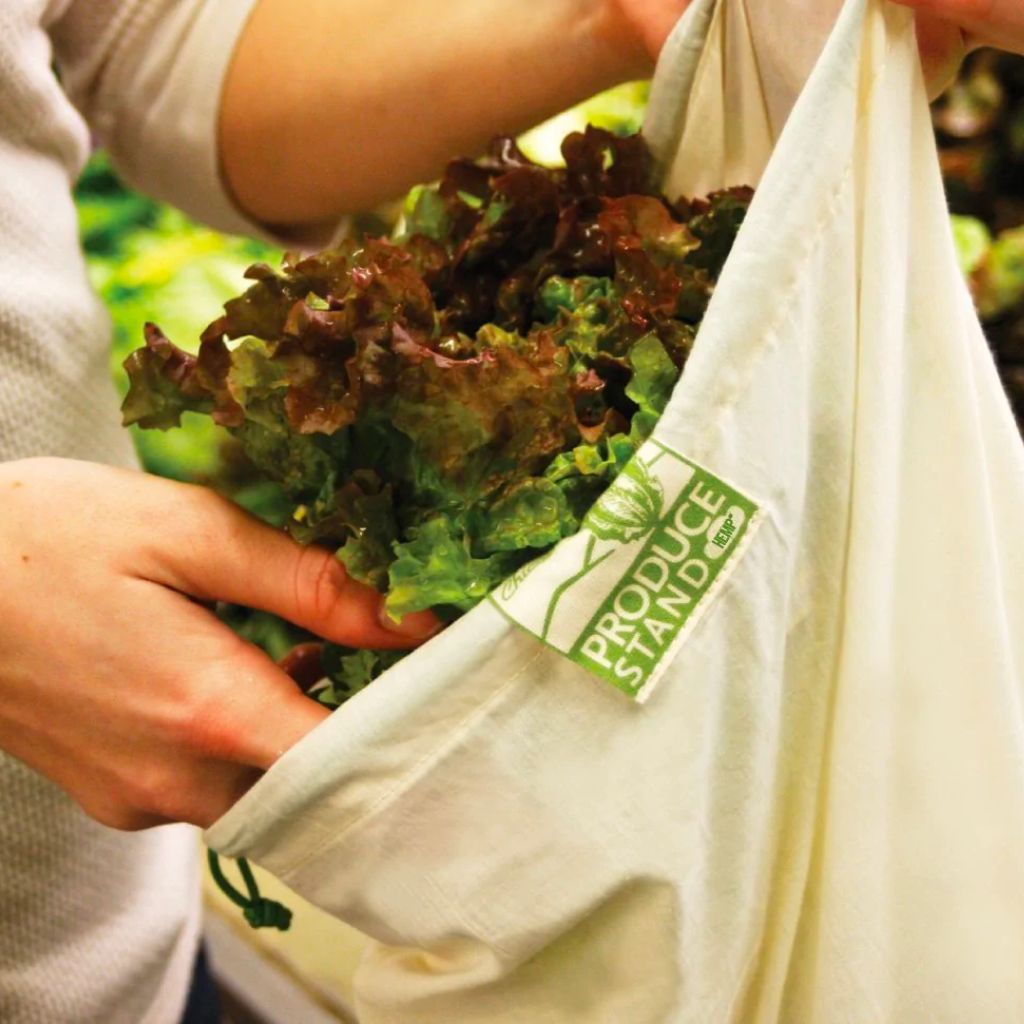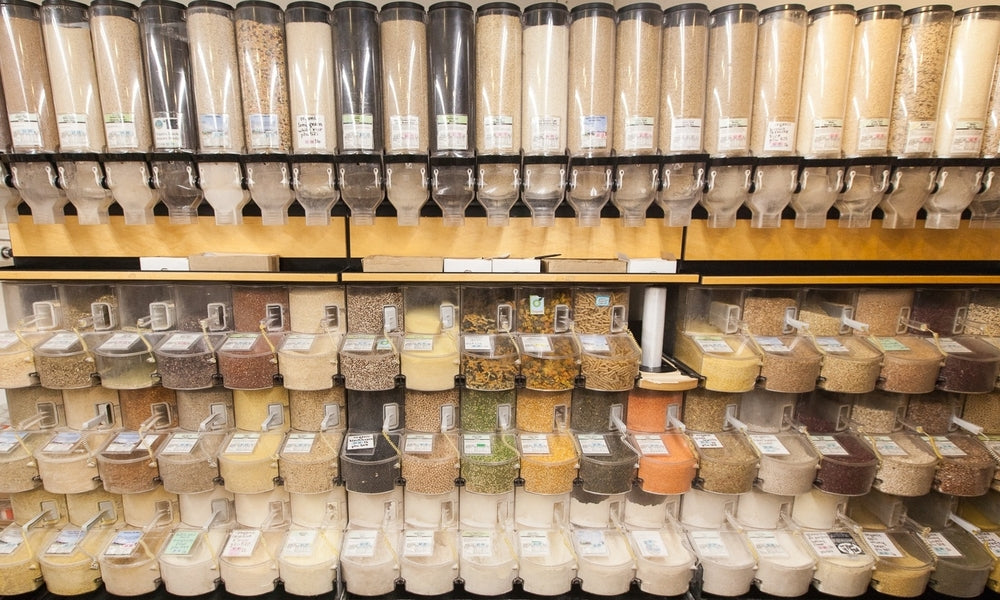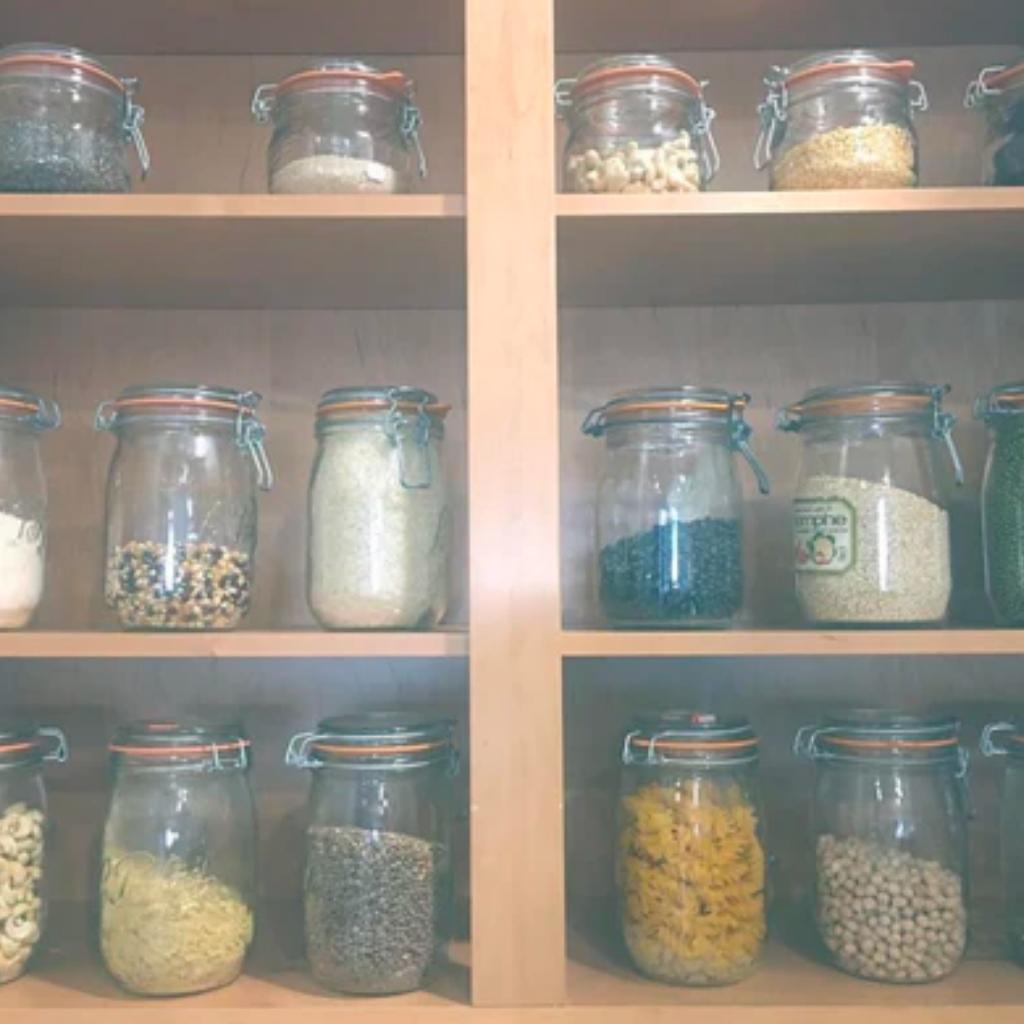Did you know that food waste takes up more space in our landfills than any other material (21.6% of landfill space, in fact!) On the surface, this may not seem like a huge deal… because food decomposes, right? Unfortunately, that’s not the whole story when it comes to food waste.
When organic matter decomposes in landfills, it gets trapped among all of the other plastic and non-organic matter, which seals it off from distributing nutrients back into the soil correctly. This creates and releases methane, which is roughly 23 times more harmful to the environment than carbon dioxide.
It’s no secret that it’s important to reduce food waste, both locally and globally, but changing personal habits can be difficult and it can take time. The key to minimizing waste is reducing how much you “consume” in the first place, which will leave you with a decluttered mentality and a happier wallet. As conscious consumers, we are the pioneers in encouraging a shift towards more package-free food options by changing our shopping habits and becoming aware of the items we purchase. When you only buy what you and your household will definitely consume while avoiding unnecessary packaging, you can protect the environment from pollution, conserve finite resources, and even save money in the process. It’s a win-win!
Don’t know where to start? Here are some zero-waste tips to clear your cart and home of excess waste!
Package Free Grocery ShoppingAisles in conventional supermarkets are full of products that are pre-packaged in non-biodegradable materials or high-grade plastics. Think microwaveable popcorn: kernels inside of a paper bag wrapped with plastic, encased in a cardboard box. Or picture your pre-cut veggies, sitting on a styrofoam tray wrapped in (again) plastic. There is so much wasted packaging that can be avoided by buying items like popcorn kernels in bulk, and vegetables in their whole form. Not only is plastic-free better for the environment, but it’s typically much less expensive.
According to the EPA, 23% of landfills are full of packaging materials, many of which are food related. Take a stand and step away from unnecessary packaging. Making a change takes time, intention, and proper planning. Next time you go to the store, try to reduce your footprint by doing just one or more of the following…
BYOB – Bring Your Own Bag!
Avoid pre-cut/pre-packaged items, especially produce, and forgo the plastic produce bags. The only purpose these serve is to get your produce from the grocery store to your home. Instead, opt for your own reusable produce bag or create your own by using an old pillowcase.
When it comes time for the question, “paper or plastic?,” instead go with option 3: hand over the reusable bags you brought from home. Reusable grocery bags and produce bags are easily stowable in your glovebox or backseat, and can reduce a ton of non-recyclable plastic bags from entering your home. Keep these bags in a handy spot in your car so you’re always ready to go, even for those impromptu trips. If you’re a rockstar on your road bike and prefer to take that instead of a car (props to you), try a grocery pannier–they are the perfect size for shopping trip necessities and will lay flat against your bike when not in use.
Buy in Bulk
Buying in bulk is another great way to pass on cardboard boxes and plastic bags. Look for items like dried grains, nuts, candy, spices, flour, or sugar to buy in bulk. To do this, you’ll just need some empty containers to take to and from the store.
Mason jars are a fan favorite, or you can reuse glass containers already lying around the house (we love pickle jars and pasta sauce jars!). Cloth bags or small food canisters can also be a great way to carry your bulk food items from the store to your home. Shopping for oils and liquids? Use empty wine bottles or a growler for craft beer or fresh kombucha! Take it one step further and bring your containers to the deli counter for meats and cheeses!
How to take on the bulk bins:
- Weigh the empty container and note it–this can be done at home, or stores usually have scales
- Fill the container with whatever your heart desires
- Note the PLU (Price Look Up) or Bin#–you can write it on your container or simply just take a photo of it on your phone
- Pay & enjoy–it’s that easy!
Plus, checkout our top ten tips for buying in bulk here!
Not all packaging is equal
Prepackaged items in grocery stores are popular for their convenience, though they’re often unhealthier and more processed than fresh, natural alternatives–but let’s be realistic; nobody’s perfect. We all have our indulgences, and sometimes you just gotta grab something and go. When you do need to buy something that’s packaged, try aiming for recyclable materials like glass, aluminum, and cardboard/paper boxes, and avoid plastics and styrofoam.
Food Friendliness… Lets Taco-bout it
You’re an expert on packaging waste; you know why it’s bad, and how to avoid it. Let’s spend some time on how to reduce food waste: the seed of life and star of the game. Food waste is a global epidemic. In fact, 1/3 of all food produced in the world is unconsumed. Believe it or not, over half of that wasted food is the fault of retailers and consumers in industrialized nations. In the United States alone, 30-40% of food supply is wasted at the retail and consumer level, creating about 35 million tons of food per year! Worth about $161 billion dollars, that could feed a whole population of people, but instead it’s decomposing in landfills and producing that environmentally degrading greenhouse gas, methane.
While these facts are scary and unsettling, we have the power to change it! Here are some tools to start the transition towards reducing your waste food at home.
Plan Ahead
It sounds simple, but it’s the little things that count. Take inventory of what you already have in your fridge and pantry before going to the market to ensure you aren’t over-purchasing. Make a list and have a plan of meals for the week to avoid impulse buys, which greatly contribute to food waste. Refrain from over-serving food and make sure to save your leftovers. Our eyes are often times bigger than our stomachs, which can lead to a bunch of wasted food. Start by serving yourself modest portions on smaller plates, and go back for seconds if you find your tummy is still grumbling for more. Save what you don’t finish and eat it for tomorrow’s lunch, or get crafty in the kitchen and create a new dish out of what’s left.
Pick the Not-So-Perfect Produce
So many fruits and vegetables get tossed because they aren’t picture perfect, even though they are completely edible and full of nutrients. Bruises can be cut off and odd shapes don’t mean bad tastes. Give the imperfects a little TLC next time you’re at the store. (Bonus: farmers markets usually offer a discounted price for blemished produce, just ask for “seconds” or “imperfects”). You’ll be saving food, dollars, and resources!
Shop the Local Farmers Market
For those of you who are lucky enough to live in an area where fresh food is grown locally, take advantage of it! Local fruits and vegetables are much fresher, since they begin to lose nutrients once they are harvested. Experience the variety that traditional grocery stores don’t always have: purple cauliflower, heirloom tomatoes, and quail eggs. By shopping locally for seasonal produce, you’re helping to preserve the farmland and green space of your region, while also minimizing your carbon footprint! Support your farmers and embrace the community feel of your local market.
Make it last!
Food is always better when it’s fresh… did you know that some materials can keep your produce fresher, for longer?
There are a ton of options for wrapping up your sliced lemons, halved avocados, and diced carrots. Here are some of our favorites!
The reusable resealable!
Replace your resealable plastic baggies with something that’s more durable, freezer save, dishwasher safe, and that keeps your food super fresh. Plus, these silicone bags come in a wide variety of colors, making food storage just a little more fun! There are too many awesome features of this bag to delve into here, but check them out to learn more!
Keep it fresh with a hug
Food Huggers are specially designed to keep fruits and veggies fresh and moisturized longer, in five stretchable sizes for differing produce sizes! Just pop this over the end of your cut fruits and veggies (love avocados?), and the seal will make sure that it will stay fresh until you need it next. No more slicing off that ‘not-so-fresh’ end!
Bonus: these work great over opened cans, too!
Bye plastic wrap, hello natural
We get it–food wraps are super convenient. We don’t get why plastic should be the only option, though. Check out these beeswax cloths instead! Simply mold these around your foods with the warmth of your hands, and they’ll mold to the perfect shape. Beeswax is a natural preservative, so your fruits and veggies will stay bright and ready for your next snack. Looking for a vegan option? Check these vegan cloths out instead!
In the end…
Freeze Your Produce and Save Your Scraps
It’s super easy to buy too many fruits or vegetables and not be able to finish them before going bad. Reduce food waste by preserving your produce and saving them for another time by sticking them in the freezer. Cut the produce up and put them in mason jars for headache-free storage. You can keep them frozen for a year before the quality starts to decline, so there is definitely time to find a use for the leftovers. These are perfect for making smoothies when the craving hits, making banana bread, or adding to yogurt or ice cream as a topping!
It’s also a good idea to repurpose other scraps including carrot tops, onion skins, and meat bones (stay with us here…). Keep them in the freezer, and once you have enough gathered, make a veggie or bone broth!
You can put your coffee grounds to good use by mixing them with brown sugar and coconut oil to hydrate and scrub dead skin away. Did you know banana peels can be used to whiten your teeth? Try rubbing the peels on your teeth once or twice a day after brushing. They can also be used to shine your shoes! Rub the inside of the peel across your tattered leather shoes and watch them shine. You’ll be surprised at how far your kitchen scraps will go! Want to DIY a bit? Check out some our zero waste home tips here!
Compost
For those leftovers you just can’t salvage, scrape your food waste into an odor-free compost bin and feed them back to mother nature. Most compost bins feature a charcoal filter to absorb odors, so you won’t even know it’s there. Chopping up a storm? This compost bin makes it simple to swipe scraps off the cutting board and into the bin, thanks to its nifty cabinet attachment–and it perfect for freezing scraps, like we mentioned before!
Some cities will pick up organic waste right at your home and others may have local drop off locations. You can see what’s available near you at findacomposter.com, or print the awesome composting guides below! When in doubt, check out EcoCycle’s composting guideline chart, and these guidelines for what non-food items you can compost! Plus, check out the EarthHero blog on How-To Compost here!
No matter how hard we try, it’s nearly impossible to eliminate waste from our lives. Start at the source and cut down on food packaging when possible! When items have reached the end of their life and can no longer be reused or repurposed, dispose of everything properly. Our goal isn’t to be 100% waste free (shoot for the moon, though!), but it’s to take steps in the right direction of eliminating how much waste we are producing.
Ready to take zero-waste past the kitchen? Check out how to start the transition here!

